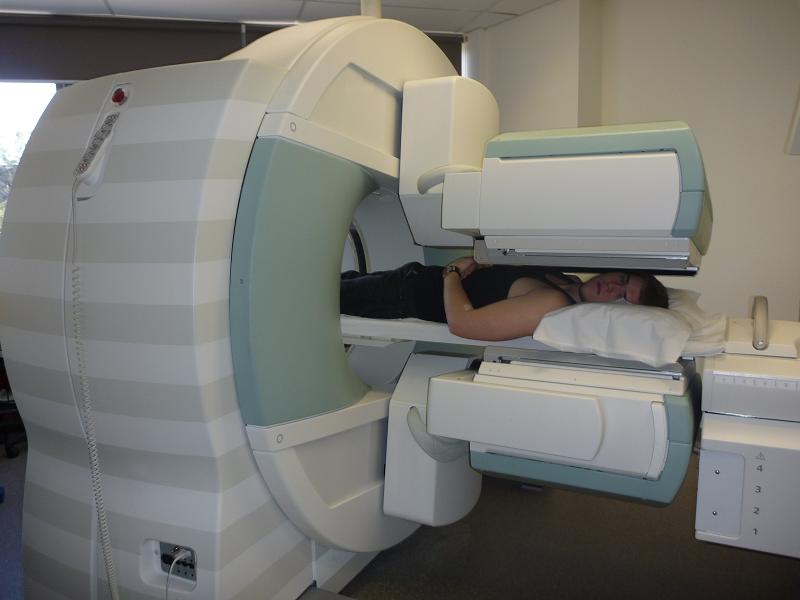Difference Between Bone Scan and Bone Density Scan
 The Difference between Bone Scan and Bone Density Scan
The Difference between Bone Scan and Bone Density Scan
As people aged a lot of health issues come to surface. The skin, which was once youthful and taut, becomes old and saggy, joints that were limber become arthritic and stiff and bones that were strong and tough- weakens and becomes brittle. We have 208 bones in the body, if any of these significantly weaken then the body mechanics can be thrown out of balance affecting the overall physical health.
During this time doctors recommend a series of test to prevent to diagnose certain conditions brought about by wear and tear. Good diagnostic exams detect unseen medical problems, but that is not always the case. Undergoing these examinations will help prevent serious medical issues if the problem is detected early on. Bone scan and bone density scans are some of the tests that should be done annually when you reached the middle age. Some people think that these tests are scary and painful, but these are actually fairly safe and relatively painless procedures.
Bone Scan
The bone scan is a specialized diagnostic procedure to determine specific medical issues about the bones. It is a nuclear radiology test that uses a radioactive substance commonly known as tracer or radionuclide. The substance is injected into the bloodstream through a direct IV or IV infusion. A period of 2-3 hours is needed to let the tracer collet within the bone tissues. The tracer emits a type of radiation- gamma radiation, which makes it possible for the scanner to process information through images of the bones.
The scanner that captures the images of the bones or the skeleton has a unique camera analogous to “Geiger counter” – it uses film to capture the radioactivity. The procedure takes 30 to 90 minutes.
The areas of concentration where the radionuclide collets, appear black on the images. These dark spots usually indicate conditions such as:
|
|
There are no harmful risks associated with this procedure. The radioactive component is minimal and disappears within hours. The injection of tracer may cause a little discomfort, but it is tolerable for most patients. The only problem, which is rarely encountered during this procedure, is the allergic reaction of individuals who have hypersensitivity to the radionuclide.
Bone Density Scan
Bone density scan sometimes referred to as DEXA (Dual X-ray Absorptiometry Test) is one of the easiest diagnostic exams you will ever have. All it takes is for you to lie on your back on a cushioned table top while being scanned by a low dose x-ray to measure the mineral density of a bone. Normally, the exam involves scanning the following:
- Lumbar vertebrae or the lower spine
- Hips or the upper section of the femur
- Bones of the forearm
- Bones of the wrist
*These are the bones in the body that have the tendency to thin and break easily.
The whole procedure only takes a few minutes, but prior to this, a relevant medical history taking is required. The procedure is by no means causes claustrophobic and the radiation is minimal, even the technologist who operates the machine needs no protection and can seat close by.
There is no tedious preparation for a bone density scan, all you need to do is remove metal objects – such as coins, jewelries, buttons and zippers. Metals can interfere with the result, which is why patients are asked to wear a gown to be safely scanned.
When the procedure is completed, the score will be in the form of a T-score. Below are the parameters how a T-score is interpreted:
|
T-Score |
Interpretations
|
| -1.0
-1.0 to -2.5
-2.5 and below |
Bones are healthy, normal and strong
Bones are beginning to this and you are likely at risk of osteoporosis
Indicates that you already have osteoporosis |
As you can see, bone scan and bone density scan are pretty simple procedures and is nothing to be unduly concerned over. Having these tests can determine medical problems that can cause serious issues if left undetected and untreated. Early diagnosis and interventions are very essential. It’s better safe than sorry.
- The Difference between Pemphigus and Pemphigoid - July 9, 2015
- The Difference between Flu and Influenza - July 9, 2015
- The Difference Between a Wound and an Ulcer - June 22, 2015
Search DifferenceBetween.net :
 Email This Post
: If you like this article or our site. Please spread the word. Share it with your friends/family.
Email This Post
: If you like this article or our site. Please spread the word. Share it with your friends/family.
3 Comments
Leave a Response
References :
[0]http://www.urmc.rochester.edu/encyclopedia/content.aspx?ContentTypeID=92&ContentID=P07663
[1]http://www.mayoclinic.org/tests-procedures/bone-density-test/basics/definition/prc-20020254
[2]http://www.webmd.com/osteoporosis/living-with-osteoporosis-7/tests
[3]http://upload.wikimedia.org/wikipedia/commons/d/d8/Woldobonescan.JPG


This information given with the differences between bone scans and bone density is incorrect. This should be removed and revised immediately
NSW president ANZSNM
Correction:
What information is incorret? Some or all of it?
Thank you,
Brent
AsBrent asked, which information is correct?